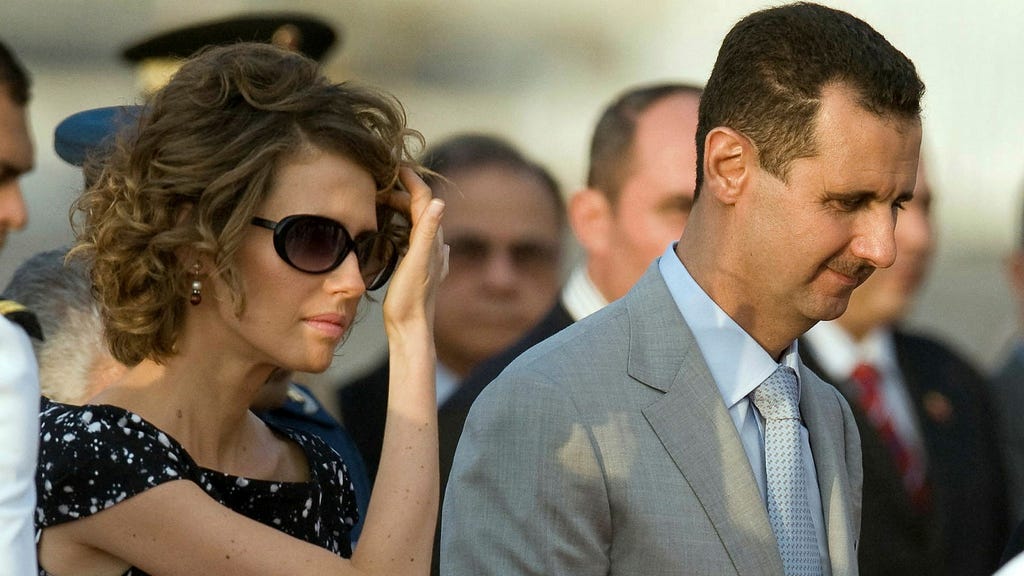The Dark Irony of Assad’s Asylum: A Dictator’s Reign of Terror
The granting of political asylum to Bashar al-Assad and his family by Russia presents a chilling irony. The deposed Syrian dictator, once a figure of power and brutality, now embodies the very stereotype often unfairly attributed to refugees: a criminal threat to civilization. While currently shielded by his Kremlin allies, Assad’s legacy is indelibly stained by crimes against humanity, a stark testament to his ruthless reign.
The extent of Assad’s cruelty became undeniably clear as Syrian rebels liberated cities and opened the doors of the regime’s notorious prisons. Emaciated figures, many bearing the scars of torture, emerged blinking into the sunlight, some having endured decades of incarceration. Harrowing footage from Damascus revealed the release of women and their children, the latter having spent their entire lives confined within prison walls. Among the freed was Raghad al-Tatary, a pilot imprisoned for 43 years for refusing to bomb Hama during a revolt against Hafez al-Assad, Bashar’s father. These stories, glimpses into the vast suffering inflicted upon the Syrian people, underscore the systematic repression that characterized Assad’s rule.
Sednaya Prison, a symbol of the regime’s barbarity, became a site of unspeakable horrors. Over 100,000 individuals were reportedly imprisoned within its walls. The sheer number of deaths necessitated the creation of dedicated "salt rooms" to store the bodies, and in 2017, a crematorium was built on the prison grounds. Torture, even of children, was routine practice. The scale of these atrocities paints a grim picture of the regime’s systematic dehumanization of its own citizens.
The initial optimism that accompanied Bashar al-Assad’s ascension to power in 2000, with hopes of a more democratic Syria, quickly dissipated. The Arab Spring, a period of democratic uprisings across the Arab world, exposed the true nature of his regime. Assad not only embraced his father’s repressive tactics but amplified them, creating a reign of terror that stands as a chilling example of state-sponsored violence. This brutal response to calls for reform shattered any illusions of progress and plunged Syria into a devastating civil war.
The international community’s misjudgment of Assad’s character is perhaps best exemplified by a Vogue magazine profile of his wife, Asma, published amidst the escalating violence. The article portrayed her as a stylish, sophisticated first lady dedicated to her children’s education and promoting political engagement, a stark contrast to the brutal reality unfolding in Syria. This glaring misrepresentation highlights the international community’s failure to grasp the true nature of the Assad regime and its ongoing atrocities.
The subsequent years witnessed the repeated use of chemical weapons against Syrian civilians, including the horrific sarin gas attack on Ghouta in 2013, which claimed the lives of 1,466 people, predominantly women and children. Despite international condemnation and demands for accountability, including President Obama’s threat of intervention, Assad’s regime continued to deploy chemical weapons, including chlorine gas attacks and further use of sarin. This flagrant disregard for international norms and human life underscores the regime’s depravity.
The Syrian civil war, which resulted in over 300,000 civilian deaths and displaced two-thirds of the population, also saw the emergence of a crude yet devastating weapon: the barrel bomb. These makeshift explosives, packed with scrap metal and explosives, were indiscriminately dropped on civilian areas, maximizing terror and carnage. With Russia’s intervention in 2015, the attacks gained precision, targeting hospitals, schools, markets, and aid workers, a hallmark of Russian military strategy. Russian support was instrumental in Assad’s brutal siege of Aleppo, effectively razing the city to the ground. The regime also employed starvation as a weapon of war, besieging areas like Ghouta and Aleppo, further demonstrating its callous disregard for human life.
While Assad’s atrocities are undeniable, it’s important to acknowledge that some opposition groups also committed war crimes and harbored questionable motives. This includes ISIS, which at its peak controlled vast swathes of territory in Syria and Iraq, and other factions whose actions during the war raise concerns about their commitment to human rights. The complex landscape of the Syrian conflict requires a nuanced understanding of the various actors involved and their respective roles in the violence.
Despite the complexities of the conflict, the jubilation of millions of Syrians upon Assad’s downfall speaks volumes. His asylum in Russia marks the end of a brutal chapter in Syrian history, but the scars of his reign of terror will undoubtedly endure. The international community must continue to hold Assad accountable for his crimes and work towards a future where such atrocities are never repeated. The granting of asylum should not equate to impunity.














